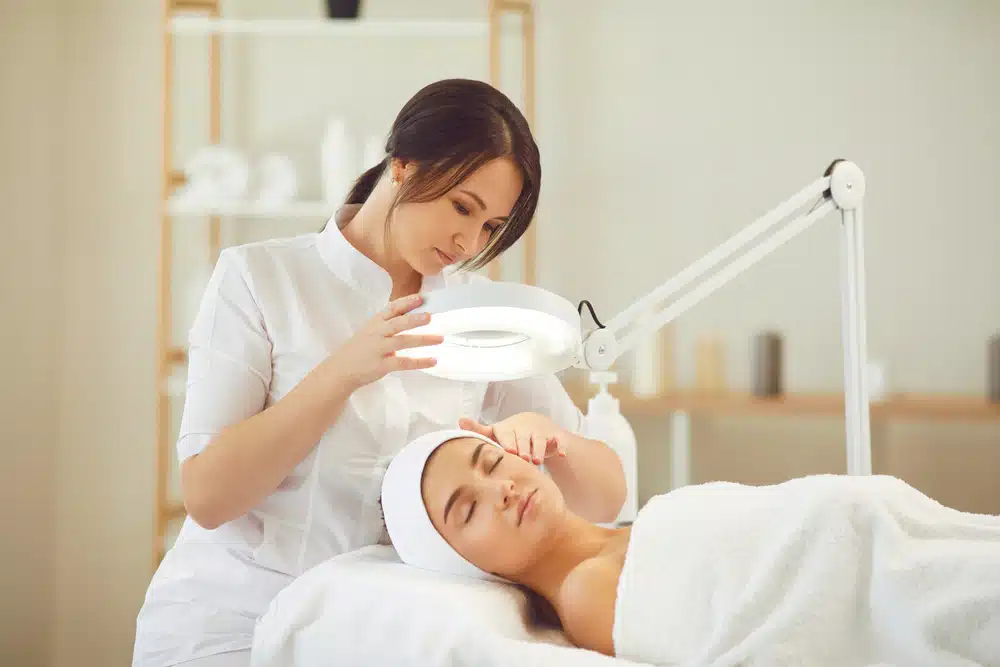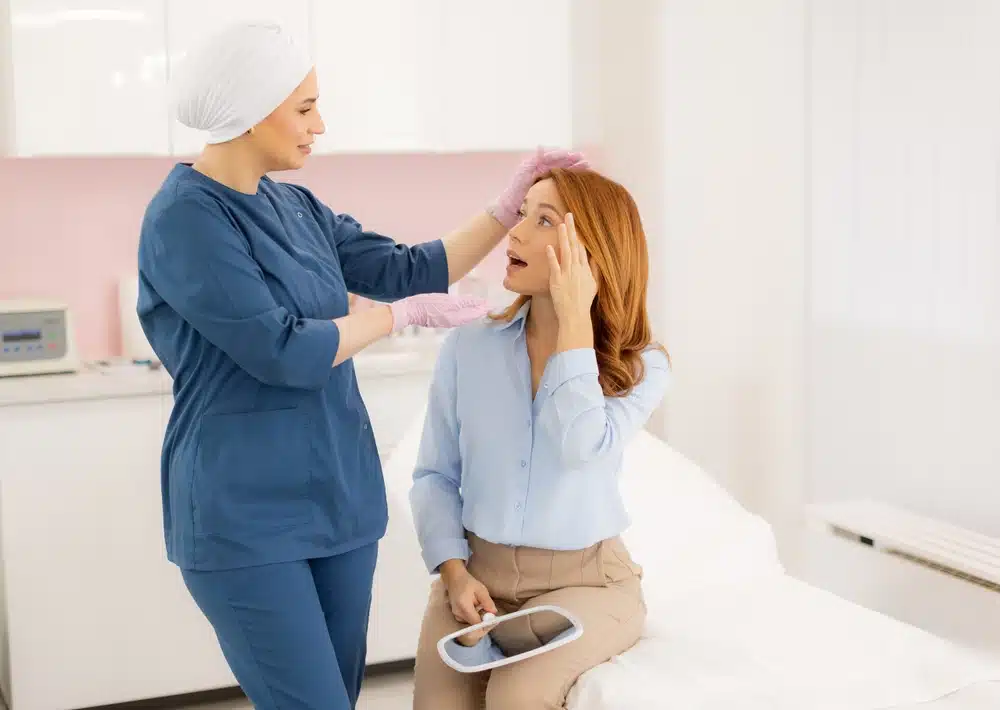
Dermal therapy is an emerging discipline within Australia’s health and aesthetics industry. With the growing popularity of non-surgical procedures and preventative skin care, this field has opened up structured career pathways for individuals interested in skin science and advanced cosmetic treatments.
This guide explores how to become a dermal therapist in Australia, detailing the qualifications required, scope of practice, career responsibilities, and future opportunities. Whether you’re beginning your journey or transitioning from a related background, the information below will help you understand what it takes to succeed in this evolving profession.
What Is a Dermal Therapist and What Do They Do?
A dermal therapist is a trained professional who delivers non-invasive skin treatments to support and improve the health, function, and appearance of the skin. Their work sits at the intersection of aesthetic practice and clinical skin care, with an emphasis on safe, evidence-based procedures.
Core Knowledge and Clinical Approach
Dermal therapists hold a deep understanding of:
- Skin biology and the structure of healthy skin
- Common dermatological concerns such as acne, pigmentation, rosacea, and signs of ageing
- The principles behind cosmetic procedures and how to tailor them to different skin types
Academic training in cosmetic chemistry, laser physics, and skin pathology equips them to interpret skin conditions accurately and develop informed treatment strategies.
Role and Scope of Practice
Although dermal therapists do not diagnose medical conditions or carry out surgical procedures, they:
- Design treatment programmes to address visible skin concerns
- Improve skin tone, texture, and overall resilience
- Offer personalised advice on skincare routines and maintenance
- Support long-term skin health through therapeutic interventions
Collaborative Settings
Dermal therapists often practise in:
- Cosmetic, medical, and dermatology clinics
- Multidisciplinary teams, including dermatologists, cosmetic nurses, and GPs
This collaborative environment enhances patient outcomes while allowing therapists to deliver targeted skin therapies within a professional framework.
Dermal Clinician vs Dermatologist: Understanding the Key Differences
While both dermal clinicians and dermatologists are involved in improving skin health, their qualifications, scope of practice, and clinical responsibilities differ significantly. Understanding these differences is crucial for anyone considering a future in skin-focused health care.
Qualifications and Training
- Dermal Clinician: Typically holds a Bachelor of Dermal Science or equivalent degree in dermal therapy. Their training focuses on non-invasive treatment modalities, skin assessment, and cosmetic skin management.
- Dermatologist: A medical doctor who completes a general medical degree followed by several years of specialist training in dermatology. This pathway often spans a decade or more of education and clinical experience.
Scope of Practice
- Dermal Clinicians:
-
-
- Perform non-invasive procedures such as laser therapy, chemical peels, and skin resurfacing
- Develop long-term management plans for aesthetic skin conditions
- Work alongside medical professionals, but do not prescribe medication or provide medical diagnoses
-
- Dermatologists:
-
- Diagnose and medically treat skin diseases, including eczema, psoriasis, and skin cancer
- Prescribe pharmaceutical treatments and topical medications
- Perform surgical procedures and skin biopsies where necessary
Work Environment
- Dermal clinicians typically work in:
- Cosmetic medical clinics
- Dermatology and aesthetic centres
- Skin and laser treatment practices
- Dermatologists are usually found in:
- Public hospitals
- Specialist private clinics
- Multidisciplinary medical centres
These two roles often complement each other. Dermal clinicians focus on managing skin concerns through non-invasive interventions, while dermatologists address medical and pathological skin conditions. In a clinical setting, dermal therapists may support dermatologists by delivering follow-up or adjunct treatments under medical supervision.
How to Become a Dermal Therapist in Australia
Pursuing a career in dermal therapy requires a combination of formal education, hands-on experience, and professional awareness. Whether entering directly from secondary school or transitioning from a background in beauty therapy, several pathways are available to help you become a qualified practitioner.
1. Complete a Dermal Therapy Qualification
If you’re researching how to become a dermal therapist, the first step is to complete one of the following qualifications:
- Certificate or Diploma in Beauty Therapy: These courses offer a basic foundation in skin and beauty services. However, they are generally not sufficient for practising in advanced or clinical settings.
- Bachelor of Dermal Science: This is the most widely recognised qualification for those aiming to become dermal clinicians or advanced skin therapists. Programmes typically span three to four years, combining theoretical knowledge with practical clinical placements.
- Postgraduate Options: For individuals already in the industry, short courses or graduate certificates in skin science, laser safety, or cosmetic dermatology can support career growth and specialisation.
2. Undertake Clinical Placement
Accredited dermal science programmes include mandatory clinical hours in professional settings such as skin clinics or aesthetic practices. These placements allow students to:
- Work with real clients under supervision
- Apply theoretical knowledge in a clinical environment
- Learn safe treatment practices and industry protocols
3. Learn to Operate Skin Technology
Modern dermal therapists must be confident using various treatment systems, including:
- Laser and intense pulsed light (IPL) platforms
- Radiofrequency and ultrasound devices
- Micro-needling and skin resurfacing equipment
Understanding the capabilities and safety requirements of such technologies is essential. Equipment from leading providers such as Alma Lasers is often used during training and in clinical practice. Familiarity with devices like the Soprano Titanium or Harmony XL PRO can provide a significant advantage when entering the workforce.
4. Stay Informed About Industry Standards
While dermal therapists are not currently subject to national registration in Australia, it’s essential to:
- Study at accredited training institutions
- Follow workplace health and safety regulations
- Stay updated on ethical practices and client consent procedures
Employers increasingly value qualifications from reputable organisations and adherence to clinical best practices.
5. How Long Does a Dermal Therapy Course Take?
- Certificate or Diploma in Beauty Therapy: 6 to 18 months
- Bachelor of Dermal Science: 3 to 4 years (full-time)
- Postgraduate short courses: Several weeks to a few months
Timelines vary based on the programme and whether the study is undertaken full-time or part-time.
Daily Tasks and Responsibilities of a Dermal Therapist

In clinical settings, dermal therapists perform a wide range of practical responsibilities that combine technical expertise with client care. Their daily work involves assessing skin conditions, delivering targeted treatments, and ensuring the highest standards of safety and hygiene.
1. Client Consultations and Skin Assessments
Initial consultations are a critical part of the therapist’s workflow. This involves:
- Conducting visual and device-assisted skin assessments
- Discussing client concerns, medical history, and lifestyle factors
- Identifying issues such as pigmentation, acne, rosacea, and signs of ageing
- Recommending evidence-based treatment plans tailored to individual needs
These consultations form the basis for all future treatments and establish trust between therapist and client.
2. Administering Non-Invasive Skin Treatments
Dermal therapists carry out a range of procedures designed to restore and maintain skin health. Treatments may include:
- Laser skin rejuvenation for texture and tone improvement
- Hair removal using diode or SHR (Super Hair Removal) technology
- Chemical peels for acne, discolouration, and mild resurfacing
- Micro-needling to stimulate collagen and reduce scarring
- LED light therapy to aid recovery and reduce inflammation
Each procedure is selected based on clinical assessment and aligned with the client’s goals and skin condition.
3. Applying Skin Technologies in Practice
Having completed formal training in aesthetic technologies, dermal therapists are responsible for their safe, effective use. Day-to-day tasks include:
- Preparing and calibrating devices before use
- Monitoring client response during treatment
- Adhering to manufacturer protocols and clinic safety standards
4. Client Education and Record Keeping
Alongside treatment, dermal therapists ensure comprehensive documentation and client support by:
- Recording treatment outcomes and updating clinical notes
- Advising on post-treatment care and skincare routines
- Educating clients on product selection, sun protection, and follow-up care
Ongoing education empowers clients to maintain results and helps build long-term professional relationships.
5. Continuing Professional Development
To remain current with evolving technologies and protocols, dermal therapists frequently engage in:
- Training workshops and professional seminars
- Equipment-specific certification programmes (e.g., from Alma Lasers)
- Skin courses focused on advanced techniques and treatment trends
Lifelong learning is central to maintaining effectiveness, compliance, and clinical excellence in this rapidly developing field.
What a Dermal Therapist Can and Cannot Do
In Australia, dermal therapists operate within a well-defined scope of practice. Their work focuses on cosmetic skin treatments that are non-invasive, evidence-based, and guided by client safety. Understanding both what dermal therapists are qualified to do—and what they are not—is essential for maintaining ethical standards and compliance with clinical protocols.
What a Dermal Therapist Can Do
With appropriate training and qualifications, dermal therapists are permitted to perform a wide range of skin-focused treatments and therapies, including:
- Laser-based treatments for pigmentation, skin rejuvenation, and vascular concerns
- Hair removal using SHR or diode technologies
- Chemical peels for exfoliation and improving skin texture
- Micro-needling (collagen induction therapy) to minimise scarring and fine lines
- LED light therapy for inflammation, post-treatment care, and acne
- Radiofrequency and ultrasound therapies to promote skin tightening and contouring
- Skincare education and home care planning, including guidance on ingredients and regimes
These procedures aim to enhance the skin’s appearance and function without penetrating deeper tissue layers or requiring medical supervision, provided that appropriate protocols are followed.
What a Dermal Therapist Cannot Do
Despite their advanced training, dermal therapists are not medical practitioners. Therefore, they are restricted from:
- Diagnosing medical skin conditions such as melanoma, eczema, or psoriasis
- Prescribing medication, including topical corticosteroids or oral antibiotics
- Administering prescription-only cosmetic treatments, such as anti-wrinkle injections or dermal fillers (unless they hold a nursing or medical qualification)
- Performing invasive surgical procedures, including mole removal or suturing
These responsibilities are reserved for dermatologists, general practitioners, or registered nurses with specific cosmetic medicine certification.
State and Clinic Protocols
While national registration is not currently required, clinical settings and individual states may impose guidelines around treatment scope and supervision. Many clinics require dermal therapists to work under a medical director or to refer clients to medical professionals when needed.
By maintaining these professional boundaries, dermal therapists play a valuable role in Australia’s growing aesthetic sector, enhancing skin health while operating within safe and ethical limits.
Your Journey to Becoming a Dermal Therapist
Understanding how to become a dermal therapist in Australia begins with choosing the right educational pathway, gaining clinical experience, and building a strong foundation in advanced skin therapies. Whether through a recognised dermal therapy course or a Bachelor of Dermal Science, formal training prepares you to deliver safe, effective treatments in a growing and rewarding profession.
With public demand for non-invasive cosmetic procedures on the rise, the role of dermal therapists has never been more relevant. From personalised consultations to evidence-based skin treatments, your expertise can directly improve clients’ confidence and skin health.
To stand out in the industry, familiarity with leading technologies is essential. Many successful clinics choose Alma Lasers for their versatility and performance across a wide range of professional skin applications. Gaining experience with such platforms can give you a competitive edge in both clinical capability and career advancement.
If you’re ready to take the next step in dermal therapy, consider how working with advanced systems, like those developed by Alma Lasers, can elevate your practice and future-proof your success in this evolving field.


